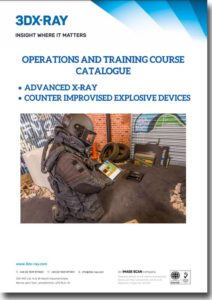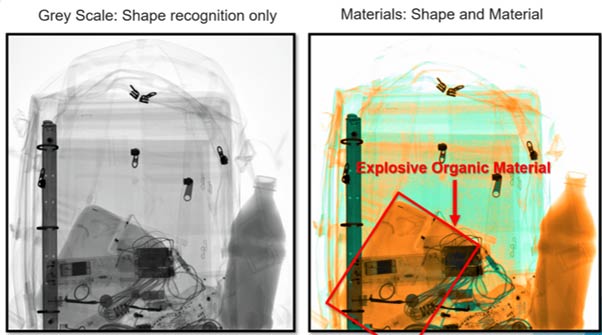Advanced x-ray IED circuit detection training course
06 August 2021
Most portable x-ray systems used for x-ray IED circuits detection rely on greyscale imaging modes. This technology lags behind cabinet x-ray systems which all use materials discrimination.
Materials discrimination is a better tool for finding threats with an x-ray image. It highlights organic and, inorganic material based on atomic number, not just carbon. It also spotlights metals.
 Our advanced x-ray IED circuit detection training course highlights:-
Our advanced x-ray IED circuit detection training course highlights:-
- the basic components of an IED circuit
- the different methods of triggering an IED
- component based IED systems
- a holistic based approach in x-ray IED circuits detection
Our LS3 portable x-ray systems uses an advanced portable x-ray generator- I-GEN. This has a very stable x-ray output and the ability to raise or lower x-ray energy. It also gives an ideal focal spot size and beam angle. These provide enhanced imaging capabilities over conventional portable systems which use pulsed x-rays.
The system’s ThreatSpect® software combines with a state-of-the-art high-resolution detector. These give impressive imaging and accurate materials discrimination analysis.
IEDs are made from just a few basic components. They will vary in appearance, but will usually include explosives, power supply, initiator, switch and timer.
 Explosives
Explosives
An explosive is something that burns or decomposes very fast, creating a lot of heat and gas. High explosives produce 12,000 to 15,000 times their volume of gas and temperatures of 3000 – 4000C. This results in enormous destructive pressure.
Military plastic explosives, such as C4, are stable and widely used by terrorists. They are easy to mould and release nitrogen and carbon oxide gasses which expand at around 8,000 meters per second. This creates a huge impact.
X-ray imaging of many plastic explosives highlights their relatively high density. It is higher than common organic materials like paper, wood or plastics. With the LS3, military and commercial explosives are shown in orange to denote organic materials.
Power supplies and x-ray IED circuits detection
Every IED needs a power supply, usually a battery. Most batteries are full of carbon with a metal case. The carbon is organic, but batteries generally appear as blue or green on the X-ray screen. This is because of their high density and metal case.
Initiator and switch
An initiator creates a small explosion that sets off the main charge. The two main types are ‘plain’ and ‘electrical’. They are typically made from a copper, glass or aluminium tube that is closed at one end.
Switches range from simple crossed wires to highly complex electronics. They are often identified by context. E.g. “Should this pack of biscuits have this metal in it?”
Wiring and timers
Wiring is needed to link the components of an IED. X-ray IED circuits detection often shows uneven wires or is inconsistent with the quality of the item.
The simplest timer is the slow-burning fuse. Mechanical clocks and watches are also widespread. Typically, the rotating hands complete a detonation circuit. Digital timers are also common.

